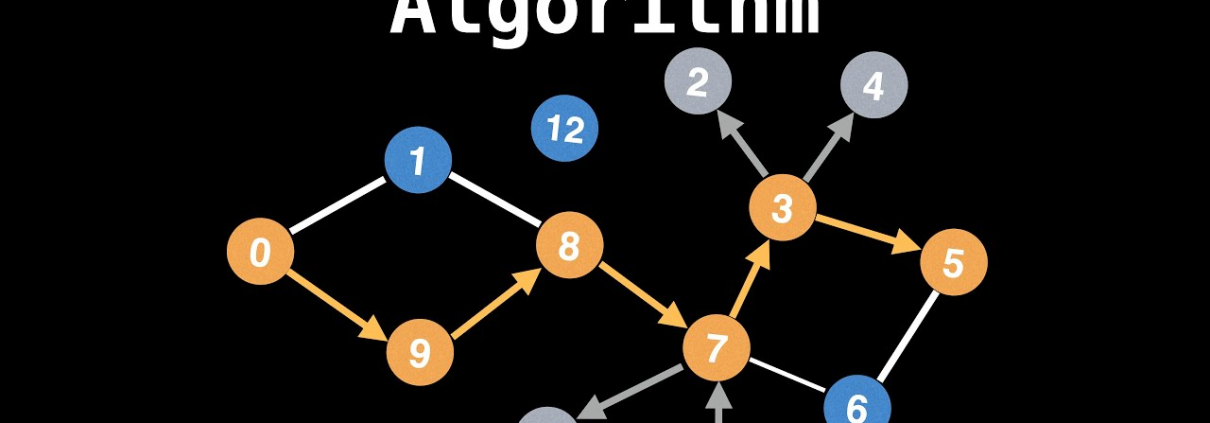A Guide to Depth-First Search (DFS) Algorithm
In the realm of graph theory and algorithms, the Depth-First Search (DFS) algorithm stands as a fundamental and versatile tool. DFS is used to traverse and explore graph data structures, making it an essential technique for a wide range of applications, including pathfinding, cycle detection, topological sorting, and more. In this comprehensive guide, you will delve deep into the world of DFS, discussing its principles, applications, and providing practical code examples in Python.
Understanding Depth-First Search (DFS)
Depth-First Search, as the name suggests, is a graph traversal algorithm that explores as far down a branch of a graph as possible before backtracking. The primary idea behind DFS is to systematically visit nodes in a graph, marking them as visited and recursively exploring unvisited neighbors until there are no more unvisited nodes. This process allows DFS to traverse the entire connected component of a graph.
Key Components of DFS
Before we dive into code examples, let’s understand the essential components of the DFS algorithm:
- Stack (or Recursion): DFS typically employs a stack data structure to keep track of nodes to visit. Alternatively, recursion can be used, as it naturally emulates the behavior of a stack.
- Visited Set: To prevent revisiting nodes, a set or array is used to mark nodes as visited.
- Graph Representation: The graph to be traversed should be represented appropriately, commonly using an adjacency list or adjacency matrix.
DFS Algorithm Steps
The DFS algorithm can be broken down into the following steps:
- Start at a source node and mark it as visited.
- Explore an unvisited neighbor of the current node (if any).
- If there are unvisited neighbors, push them onto the stack (or make a recursive call) and repeat step 2.
- If there are no unvisited neighbors, backtrack to the previous node (pop from the stack or return from the recursive call).
- Repeat steps 2-4 until the stack is empty (or the recursion ends).
Applications of DFS
DFS has a wide range of applications in computer science and beyond:
- Pathfinding: DFS can be used to find paths between two nodes in a graph, like finding a route on a map or the solution to a maze.
- Cycle Detection: It is used to detect cycles in a graph, crucial in various applications, such as deadlock detection in operating systems.
- Topological Sorting: In directed acyclic graphs (DAGs), DFS can be used to perform a topological sort, which is essential for tasks like scheduling.
- Connected Components: DFS helps in identifying and counting the connected components within a graph.
- Tree Traversal: When applied to trees (a specific type of graph), DFS can traverse a tree in different ways, including in-order, pre-order, and post-order traversals.
Now, let’s get practical and explore Python code examples for implementing the DFS algorithm.
Python Code Examples
DFS on an Adjacency List Graph
Suppose we have a graph represented as an adjacency list. We can implement DFS using a stack or recursion. Here’s an example using a stack:
def dfs(graph, start):
visited = set()
stack = [start]
while stack:
node = stack.pop()
if node not in visited:
print(node, end=' ') # Process the node (change this as needed)
visited.add(node)
stack.extend(neighbor for neighbor in graph[node] if neighbor not in visited)
Let’s break down the code:
- We start with a stack containing the initial node (`start`).
- We pop a node from the stack, visit it, mark it as visited, and push its unvisited neighbors onto the stack.
- We repeat this process until the stack is empty.
DFS on an Adjacency Matrix Graph
If your graph is represented as an adjacency matrix, you can adapt the DFS algorithm accordingly. Here’s a Python example:
def dfs(matrix, start):
n = len(matrix)
visited = set()
stack = [start]
while stack:
node = stack.pop()
if node not in visited:
print(node, end=' ') # Process the node (change this as needed)
visited.add(node)
neighbors = [i for i in range(n) if matrix[node][i] == 1 and i not in visited]
stack.extend(neighbors)
In this code, we use a 2D binary matrix to represent the graph, where `matrix[i][j]` is 1 if there is an edge from node `i` to node `j`, and 0 otherwise.
Conclusion
Depth-First Search (DFS) is a powerful algorithm for traversing and exploring graphs in a systematic manner. Its versatility and wide range of applications make it an essential tool for solving various computational problems. By understanding the principles of DFS and practicing with code examples like the ones provided in this guide, you’ll be well-equipped to apply this algorithm effectively in your own projects and problem-solving endeavors. Happy graph exploration!






